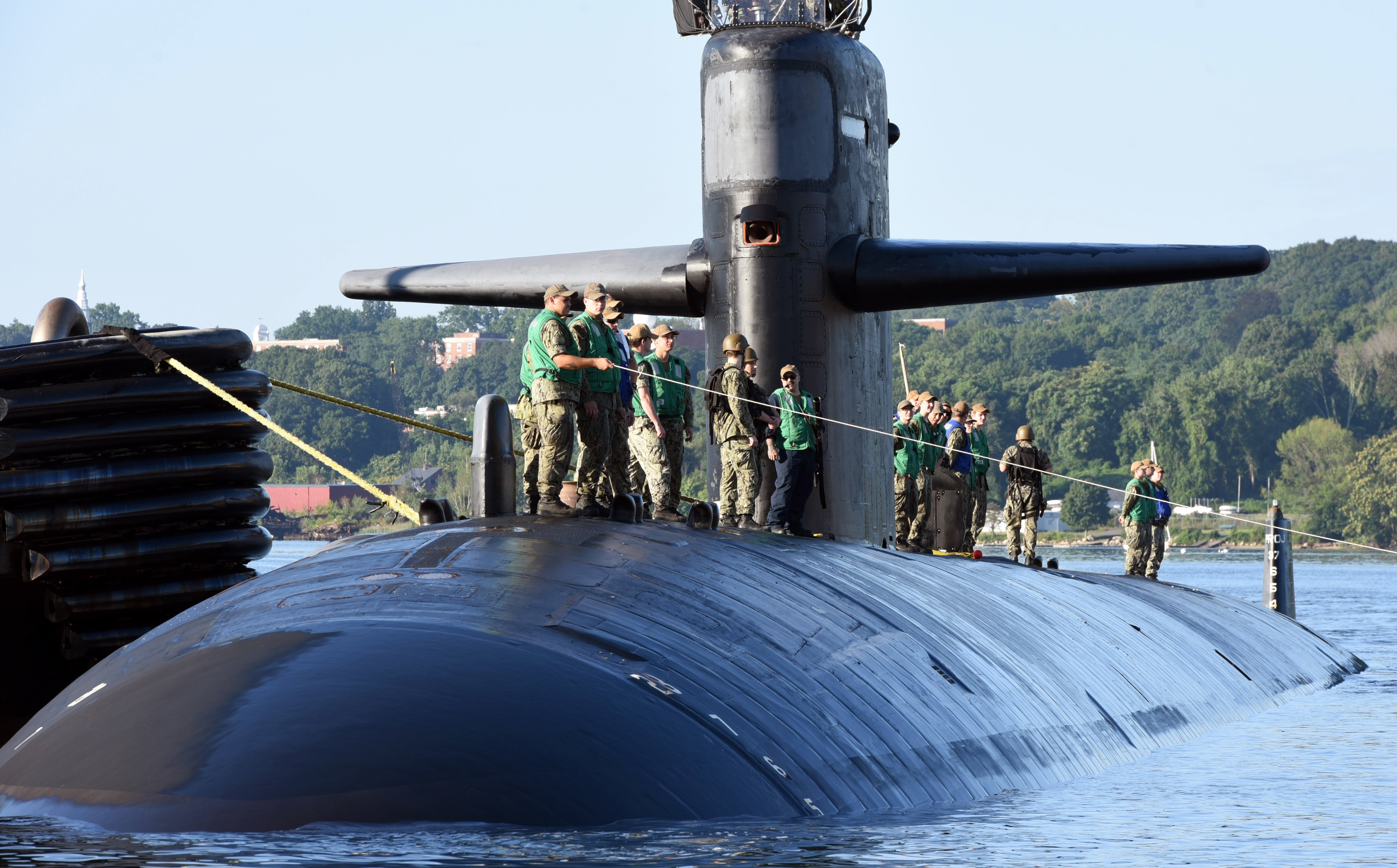
USS Providence at Naval Submarine Base New London August 2020.
WASHINGTON: With the construction of seven Navy destroyers already at least six months behind schedule at Maine’s Bath Iron Works, some 4,300 striking shipyard workers there returned to work Sunday after ten weeks off the job.
The strike hit the General Dynamics-owned shipyard hard, reducing work on the ships to a crawl as the Navy is pushing hard to grow the size of its fleet by dozens of ships to meet President Trump’s campaign promise to have a 355-ship fleet.
The Navy won’t reach the 355-ship goal for years, as it struggles to produce a credible shipbuilding plan and faces flat budgets for at least the next several years. The delays at Bath only compound those troubles.
In a post to its website, the union representing the striking workers, Local S6, said 87 percent of its members voted to support the new three-year deal with Bath.
“Now that we successfully protected our contract language with respect to subcontracting and seniority, we need to get back to work and continue to prove to the U.S. Navy that ‘S6 built is best built,” said Chris Wiers, the president of the local union chapter.
As the members were preparing to vote in Maine, the new Secretary of the Navy Kenneth Braithwaite was a few hundreds miles to the south, inspecting the service’s primary submarine builder.
Braithwaite, who has made few public appearances since being confirmed in May, toured the Electric Boat facility, also owned by General Dynamics, alongside Chairman of the House Armed Services Subcommittee on Seapower Rep. Joe Courtney. The Groton, Connecticut shipyard is getting ready to sustain a two-a-year build rate of Virginia-class submarines while also starting to build new Columbia-class submarines starting next year.
Courtney has pushed to restore the second 2021 Virginia-class submarine in the 2021 budget.
Currently, the House version of the 2021 bill provides $6.8 billion to buy two Virginia subs, about $2.5 billion more than the White House’s budget request. On the other side of the Capitol, the Senate added $472 million to the White House request for long lead materials for a future additional submarine.
The new submarines will enter an undersea fleet struggling with deep-seated maintenance issues. A Government Accountability Office report issued last week reported that 75 percent of the Navy’s carrier and submarine fleets are unable to make it through scheduled repairs on time, averaging 113 days late for aircraft carriers and 225 days late for submarines.
The new report, which charted shipyard issues between 2015 and 2019, noted that despite the Navy boosting its shipyard workforce by 3,800 people and spending $2.8 billion to address shipyard performance during that time period, ships continue to languish in port.
Shipbuilder Austal USA names Michelle Kruger as new president
Kruger had been serving as interim president since former chief Rusty Murdaugh resigned last spring.



























